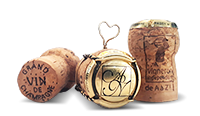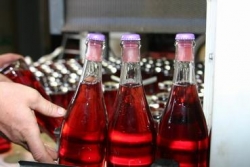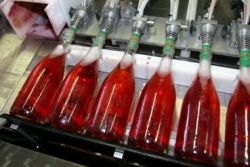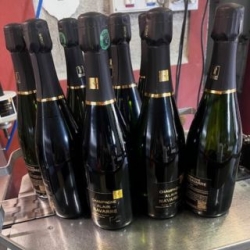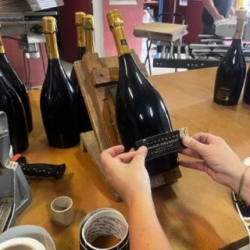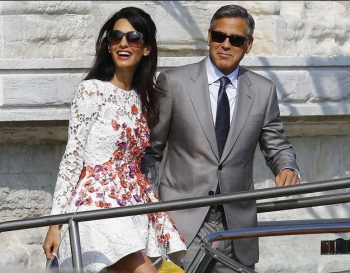The Winery
Before it is ready for tasting, champagne undergoes its final transformations. Riddling, disgorging, dosage, and final labelling are precise actions that reveal the elegance and character of the wine.
Riddling
After the second fermentation in the bottle, a deposit of yeast naturally forms. To obtain a clear wine, this deposit must be gradually gathered into the neck of the bottle. Traditionally, bottles were placed upside down on wooden racks, then manually turned by an eighth of a turn every day for several weeks. Today, this operation is mostly carried out using gyropalettes, automated machines capable of riddling several hundred bottles at once with precision and consistency.
Thanks to this modern method, riddling remains true to the spirit of Champagne craftsmanship, while adapting to contemporary quality and production time requirements.
Disgorging
Once the deposit is gathered into the neck of the bottle, the disgorging process begins. The neck of the bottle is plunged into a refrigerated bath, forming an ice plug that traps the deposit.
Under the effect of internal pressure (about 6 bars), the ice plug is expelled, carrying the deposit with it and naturally and effectively cleaning the bottle.
Dosage
After disgorging, a small amount of wine has been lost. Therefore, the level must be topped up. This is when the liqueur d’expédition is added, a blend of clear wine and sugar, the quantity of which determines the style of the champagne.
Different styles are thus obtained:
- Brut Nature (no added sugar)
- Brut (the most common)
- Extra-Dry, Sec, or Demi-Sec, depending on the desired residual sugar level.
The bottle is then sealed with a cork and secured with a wire cage.
Labelling
The final touch before tasting: labelling. Each bottle is adorned with its label and cap. These graphic elements are both aesthetic and informative, reflecting the identity of our house.
The bottle is finally ready to be tasted, a symbol of several years of work and passion.
Since the harvest, a minimum of two years will have passed. For vintage champagnes or prestige cuvées, this time can extend to three years of patience and maturation before revealing the full finesse and richness of their aromas.
